Can you tackle poverty through hairdressing ? There are many other ways to do it, but look at these basic figures
More than a billion people live in extreme poverty, women are estimated to make up 2/3 of that number, perform 2/3 of the world’s work, produce 50% of the world’s food, earn 10% of the world’s income and own 1% of the world’s property.
(United Nations Development Programme, 2011. Gender Equality: Fast Facts. New York: UNDP.)
Gender inequality has to be at the heart of the problem:
Hairdressing is one of the courses that are run under the DFID (The Department for International Development, ie the British Government) sponsored Youth Development Programme at this college (Daniel Comboni Vocational Institute) and across the rest of Northern Uganda.
During a recent visit you could tell that our DFID visitors were not sure about hairdressing as a vocational subject. The convincing responses by the trainee hairdressers, there are nearly seventy of them and all female, begins to tell you the issues that young African women face in trying to earn a living.
‘Why are you not doing a course like electrical installation?’
‘Because Madame we have no education, we have been out of school. For electrical you need the certificate.’ [Primary Leaving Certificate after seven years of schooling, showing that you can read and write. Actually for electrical you need higher than that]
‘OK, so why not the building trades then?’
‘Madame you cannot climb a ladder with a baby on your back’
‘OK, so why hairdressing?’
‘Because Madame, with hairdressing , you can set up at your home or in the village, it does not cost so much and your children are with you and you work when the time is right. There is always work, everybody has hair’ [Hair braiding and weaving is very complex, ubiquitous and costly]
‘But can you develop it and make a career?’
‘Madame there is Salon’ [this is extension work like nails and what is called Body Beauty; a big business also]
In fact there were several female bricklayers who graduated from here recently, one at the top of her class, and many more across the programme.
Seven metal workers, many female carpenters, mechanics and so on.
Laudably, DFID insists on a 50/50 male female balance across the enrolment, and the new female intake who registered this week show even greater enthusiasm for traditionally male courses.
Trainees saw hairdressing as one solution to the education barrier that prevents women earning more. Why had they not been educated? As the Comboni Manager of the Programme told me:
‘There is a high level of women at Primary but it is a pyramid, it drops off. Because of marriage, work, family and cost. Parents will not invest in female education; they will not invest the cost for a girl child’
It is not all about hair weaves, DCVI have a new agriculture course, again to include more women:
‘We are starting a new agriculture course that will work to bring in women , that teacher will be female … role models really help and we would like more female instructors.’
A recent World Bank and the ONE Campaign report (‘Levelling the Field, improving opportunities for women farmers in Africa’) which I came across in an excellent article on the Guardian website, shows that the output of female farmers is noticeably less than male counterparts (13% less in Uganda, up to 25% in Malawi) The reasons for this productivity gap are various, but most evident for us is the lack of good quality and relevant education for women.
VSO are also heavily involved in the Women in Power campaign, developing a new international development framework after the Millennium Development Goals run out in 2015, addressing the lack of women at every level of political power, particularly where it matters:
‘In a world where women make up almost two-thirds of people living in extreme poverty, it is neither just nor practical for their voices to go unheard at the highest levels of decision-making in our societies’
The Women in Power campaign is aiming to change the gender balance of power , one of the aims of the Youth Development Programme run by VSO in Northern Uganda is to equalise the gender imbalance at the other end of society. To improve the lives of the powerless through skills and life training; to make them financially, politically and socially active; maybe hairdressers can take over the world.
It is a question as the Comboni Manager says, of changing the ‘mindset’:
‘Students are coming with an existing mindset that needs to be changed, that is the biggest barrier; the mindset. So for men who want to go into hairdressing, it is about the perception of parents and society.’
Indeed several young men have enrolled this time for hairdressing, they clearly know something about the future.

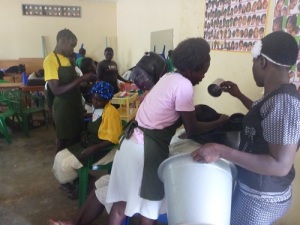
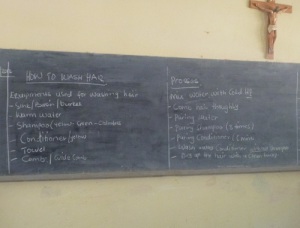
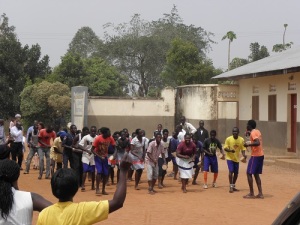
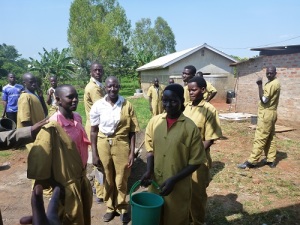
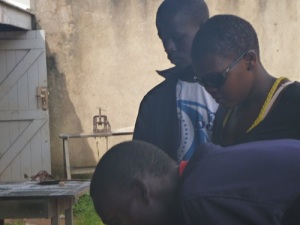

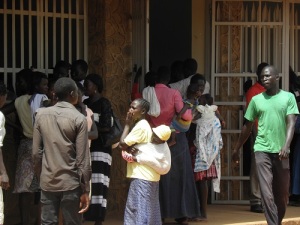
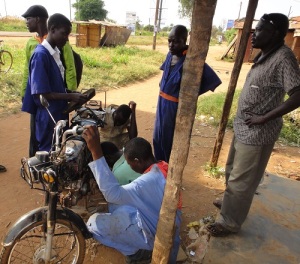


4 comments
Comments feed for this article
April 17, 2014 at 8:06 am
simplysorro
Another intriguing post. Thanks! Paul
LikeLike
July 6, 2015 at 1:18 pm
Ruth
I have really really enjoyed browsing your blog – so interesting and really well written. Great photos too. Thanks so much for taking the time to document your experience.
LikeLike
July 21, 2015 at 7:42 am
Mark White
Thanks Ruth, more coming soon I hope
LikeLike
July 20, 2015 at 12:19 pm
Mark White
Thank you Ruth, more to come soon I hope
LikeLike